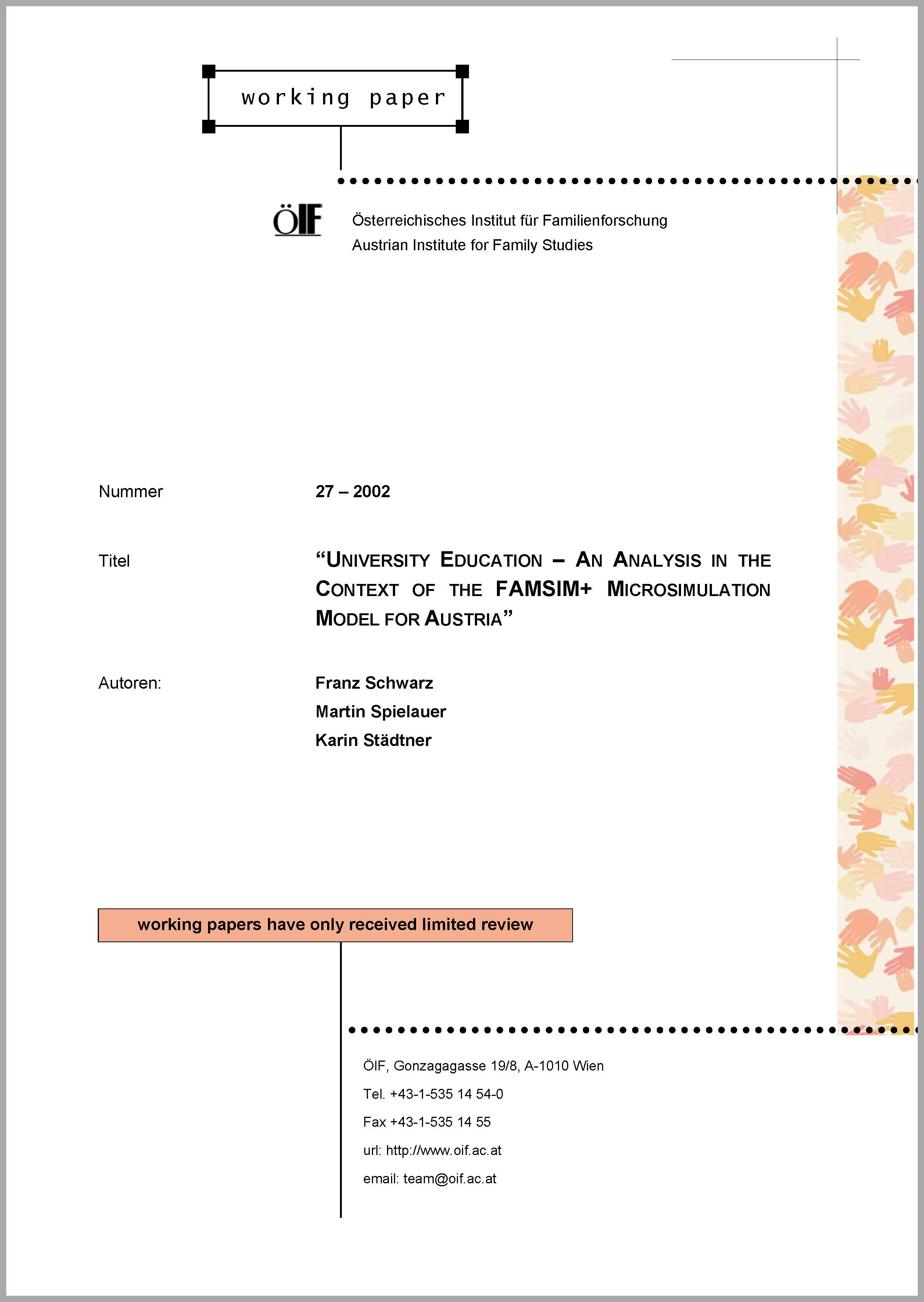University Education
An Analysis in the Context of the FAMSIM+ Microsimulation Model for Austria. Working Paper 27
Von: Franz Schwarz, Martin Spielauer, Karin Städtner
Working Paper Nr. 27 | 2002 | 49 Seiten
Das ÖIF betreibt zum Thema Bildungsentscheidung aktuelle Forschungen, u.a. werden Mikroanalysen als Basis eines Simulationsmodells verwendet, welches die zukünftige Zusammensetzung der österreichischen Bevölkerung nach Bildungsschicht untersucht. Diese Modelle schließen zusätzlich das unterschiedliche Fertilitätsverhalten (Anzahl, Zeitpunkt von Geburten) und Partnerschaftsverhalten (etwa Bildungsunterschiede in Partnerschaften) unterschiedlicher Bildungsgruppen ein. Datenbasis für diese Mikrosimulationsmodelle ist das Sonderprogramm des Mikrozensus 2/1996.
This working paper on university education analyzes the influencing factors on university enrollment rates, graduation vs. dropout rates as well as study durations in Austria. The analysis is based on the special program of the 1996 micro census that includes detailed educational histories. On the macro level, a considerable increase of enrollment rates can be observed that more than doubled in the second half of the last century. Female enrollment rates that were only one third of the male rates for the 1935-39 birth cohort, have already drawn level with the male rates. Changes on the macro level are the outcome of decisions taken by the individual agents on the micro level. Moving from the macro to a micro analysis of university enrollments and graduations, a very stable relation between parents’ educational attainments and the university graduation rates of their offspring can be found, besides the diminishing gender differences in educational behavior. For given educational levels of the parents, enrollment rates almost remained constant or even slightly decreased over time for the males, while female rates moderately increased and eventually met the male rates in the last decades. Given the marked differences in enrollment rates according to parents’ education – for the last birth cohort 1965-69 the rates range from around 4% to nearly 60% for the lowest and the highest (of the five) educational groups – a considerable part of the changes on the macro level can therefore be attributed to the changing educational composition of the parents’ generation. This result is consistent with the findings regarding prior educational transitions as studied in two previous papers. Being written in the framework of the FAMSIM+ microsimulation model currently under development at the Austrian Institute for Family Studies, various regression models regarding university education will be developed in this paper, besides providing a descriptive analysis. These models will serve as basis of the behavioral modules of the FAMSIM+ model that consists of three sub modules regarding university enrollments and graduations: First, it is determined whether a person enrolls at university. Second, it is decided if an enrolled person will graduate from university or drop out. Third, the individual enrollment duration is determined by means of a survival analysis.
Download (PDF): University Education. Working Paper Nr. 27 | 478 KB

